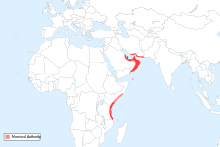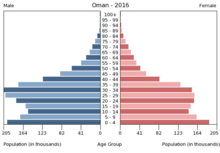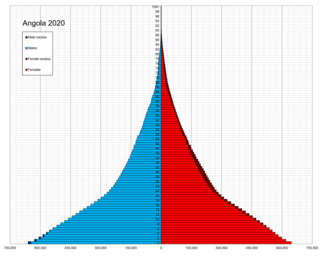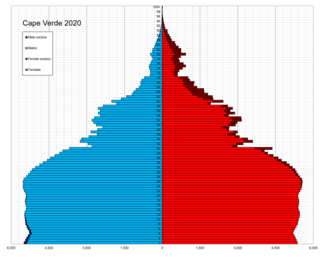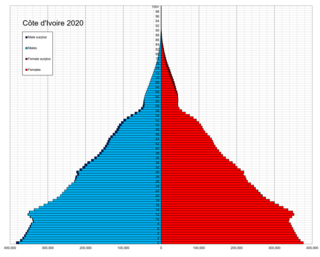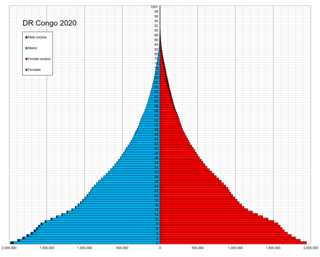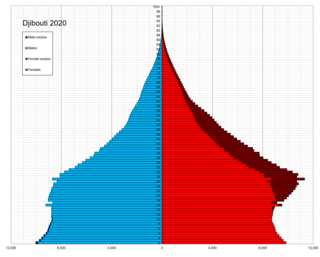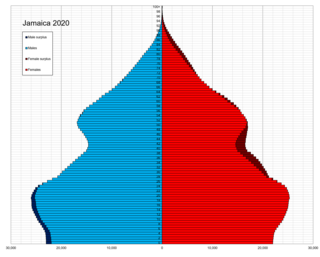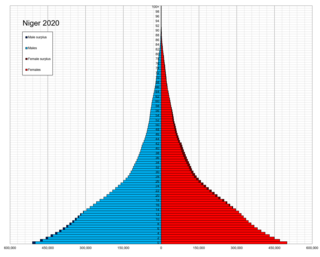This article's factual accuracy may be compromised due to out-of-date information.(January 2017) |
| Demographics of Oman | |
|---|---|
 Population pyramid of Oman | |
| Population | 4,962,758 (Jan 31. 2023) |
| Growth rate | 1.84% (2022 est.) |
| Birth rate | 22.11 births/1,000 population (2022 est.) |
| Death rate | 3.23 deaths/1,000 population (2022 est.) |
| Life expectancy | 76.9 years |
| • male | 74.96 years |
| • female | 78.93 years (2022 est.) |
| Fertility rate | 2.7 children born/woman (2022 est.) |
| Infant mortality rate | 14.45 deaths/1,000 live births |
| Net migration rate | -0.45 migrant(s)/1,000 population (2022 est.) |
| Age structure | |
| 0–14 years | 26.53% |
| 15–64 years | 70.88% |
| 65 and over | 2.59% |
| Sex ratio | |
| Total | 1.17 male(s)/female (2022 est.) |
| At birth | 1.05 male(s)/female |
| Under 15 | 1.05 male(s)/female |
| 65 and over | 0.79 male(s)/female |
| Nationality | |
| Nationality | Omani |
| Language | |
| Official | Arabic |
Demographics of the population of Oman include population density, ethnicity, education level, health of the populace, economic status, religious affiliations and other aspects.
Contents
- Population
- Census results
- UN estimates
- Structure of the population
- Vital statistics
- UN estimates 2
- Ethnic groups
- Migration
- CIA World Factbook demographic statistics
- Nationality
- Religion
- Languages
- Literacy
- Overseas Omani people
- See also
- References
- External links
- Government
About 50% of the population in Oman lives in Muscat and the Batinah coastal plain northwest of the capital; about 200,000 live in the Dhofar (southern) region; and about 30,000 live in the remote Musandam Peninsula on the Strait of Hormuz.
Since 1970, the government has given high priority to education in order to develop a domestic work force, which the government considers a vital factor in the country's economic and social progress. In 1986, Oman's first university, Sultan Qaboos University, opened. Other post secondary institutions include a law school, technical college, banking institute, teachers' training college, and health sciences institute. Some 200 scholarships are awarded each year for study abroad.
Nine private colleges exist, providing two-year post secondary diplomas. Since 1999, the government has embarked on reforms in higher education designed to meet the needs of a growing population. Under the reformed system, four public regional universities were created, and incentives are provided by the government to promote the upgrading of the existing nine private colleges and the creation of other degree-granting private colleges.

